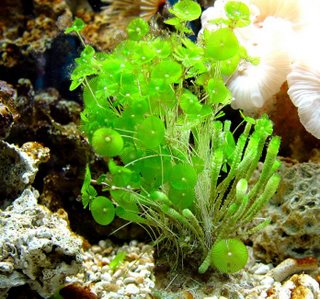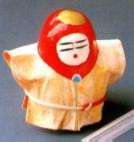::::::::::::::::::::::::::::::::::::::::::::::::::::::::::::::::::::::::::::::::::::::::::::::::::::
Hiroshima Prefecture

Hiroshima Prefecture (広島県, Hiroshima-ken) is a prefecture of Japan located in the Chūgoku region on Honshū island. The capital is the city of Hiroshima.
The area around Hiroshima, formerly divided into Bingo and Aki provinces, has been a center of trade and culture since the beginning of Japan's recorded history. Hiroshima is a traditional center of the Chūgoku region and was the seat of the Mori clan until the Battle of Sekigahara.
Hiroshima is home to two UNESCO World Heritage sites:
the Atomic Dome in Hiroshima, one of the few remnants of prewar Hiroshima following the atomic bombing in 1945;
Itsukushima Shrine in Miyajima, famed for filling with water and appearing to "float" during high tide.
The sheltered nature of the Inland Sea makes Hiroshima's climate very mild.
Hiroshima's main industries include automobiles (Mazda is headquartered in Hiroshima Prefecture) and shipbuilding (Kure was one of the main naval bases of the Imperial Japanese Navy and remains a major commercial yard).
© More in the WIKIPEDIA !
. . . CLICK here for Photos !
:::::::::::::::::::::::::::::::::::::::::::::::::::::::::::::::::::::::::::::::::::::::::::::::::::::
WASHOKU - Sweets from Hiroshima
Local dishes from Hiroshima 広島の郷土料理
anago 穴子 / 海鰻 conger eel is a speciality of the warmer waters of Western Japan.
anago meshi あなごめし
Since more than 100 years a station lunchbox at Miyajima.

anago あなご (穴子)
anago sashimi アナゴ刺身 sashimi from conger eel
with the fish still alive . 穴子の刺身
. . . CLICK here for Photos !
Meeraal, “Kind der Höhle”. sea eel
. Yahata-maki 八幡巻き anago roll .
. densuke anago でんすけ穴子 . - Hyogo
. Pike conger eel (hamo) .
. unagi うなぎ / 鰻 と伝説 Legends about the eel .
:::::::::::::::::::::::::::::::::::::::::::::::::::::::::::::::::::::::::::::::::::::::::::::::::::::
awabitake あわび茸 / あわびたけ "awabi mushroom"
abalone mushroom
Pleurotus cystidiosus (abalone)
A white mushroom with a large hat, grown in special dark houses.
It is quite expensive, but now can be grown all year round and the local restaurants use it for specialities.
It tastes chewy like an abalone. Eaten as steak in European style with special sauce.
. . . CLICK here for Photos !

bataa keeki バターケーキ butter cake
a kind of castella cake. From Nagasakidoo shop
bishonabe, bisho nabe 美酒鍋(びしょなべ)hodgepodge with sake only
From Saijo Town 東広島・西条. bisho nabe びしょ鍋
Sake is made in this area. For the hodgepodge, the ingredients are only simmered in the rice wine. The workers in a sake factory were called "bisho" (from the sound of splashing water, bisho bisho ビショビショ. For the Chinese characters, the present version was then choosen for more effect, meaning "Beautiful Ricewine".
When heated, the alcohol part of the sake blows off and only the good flavor remains with the food.
All kinds of seasonal vegetables, Tofu, Konnyaku, pork, chicken and some salt are used. Bits of garlic can be used too. For the rest an egg can be used to make some ojiya rice gruel with the broth.
Especially eaten for the "Sake Festival" in Yokkaichi.
. . . CLICK here for Photos !
gansu がんす
a kind of thin cotelette made from ground fish meat
. . . CLICK here for Photos !
魚のすり身の揚げ物
gansu don がんす丼 gansu on a bowl of rice
gansu manjuu がんす饅頭
gansu doonatsu がんす ドーナツ doughnuts with gansu
. . . CLICK here for Photos !
がんす頑次郎
:::::::::::::::::::::::::::::::::::::::::::::::::::::::::::::::::::::::::::::::::::::::::::::::::::::
hamakonabe, hamako nabe 浜子鍋
hodgepodge for the "beach children"
hamako is the old name for the workers in the salt fields of the islands off Onomachi, Ikuchijima, Setoda 生口島/瀬戸田(いくちじま/せとだ). The island was formerly used by the priates of Murakami suigun 村上水軍 and a nabe in their honor is also served here and on Innoshima (In no shima 因島(いんのしま)).
Made with miso taste and fresh seafood and vegetables of the season.
CLICK here for PHOTOS !

. Murakami Suigun Nabe 村上水軍鍋 .
hassaku daifuku はっさく大福
sweet dumplings with a hassaku orange inside
. . . CLICK here for Photos !
igisudoofu, igisu tofu いぎす豆腐 tofu with igisu red seaweed
WASHOKU : igisu dishes
. . . CLICK here for Photos !
Iwashi 鰯 (いわし) sardines KIGO List and FOOD
koiwashi 小いわし "small sardines", Japanese anchovy
speciality of the town
iwashi no atama yaki イワシの頭焼き (yakigashi 焼嗅がし)
At the Sumiyoshi shrine 住吉神社 in Hiroshima
:::::::::::::::::::::::::::::::::::::::::::::::::::::::::::::::::::::::::::::::::::::::::::::::::::::
kaki no dotenabe かきの土手鍋 / 牡蠣の土手鍋
oyster hodgepodge
with a salt rim
. . . CLICK here for Photos !
kaki shigureni かきしぐれ煮 sweetly simmered oysters
牡蠣の時雨煮
. . . CLICK here for Photos !
Kure reimen 呉冷麺 cold noodles from Kure
Slightly flat, cold Chinese soba noodles, a shrimp, two slices of chashu meat, half an egg. Then a special vinegar/red hot pepper sauce is poored over the noodles.
CLICK here for PHOTOS !
kurodai miso くろだい味噌 / 黒鯛味噌/ 黒鯛みそ
miso paste with black tai fish
black sea bream, Acanthopagrus schlegeli is a speciality of the area.
. . . CLICK here for Photos !
. . . CLICK here for other black sea bream food Photos !
tai-aji chirimen 鯛味ちりめん
small white fish simmerd with tai broth
nejiripan, nejiri pan ねじりパン "twisted bread"
From Mukojima Island 向島 off Onomichi
The baker can make it with a whiff of his hand.
It is of course also made in other parts of Japan, with various flavours, like chocolate or brown sugar.
. . . CLICK here for Photos !
chokochippu nejiri pan チョコチップのねじりパン
nikujaga 肉じゃが "meat and potatoes"
The meat is usually beef.
from Kure city
The town of Kure is one of the originagors of this dish, together with Maizuru.
Toogoo Heihachiro of the Marine is said to have introduced this dish to the mariners after eating it in Europe.
In Kure, they do not use water but may queen potatoes, beef, shirataki noodles and onions.
If you add also carrots and green peas, it is no longer nikujaga from Kure city.
The city of Kure is also lately trying to introduce the Marine gourmet, kaigun gurume 海軍グルメ, giving some dishes the names of the ships which were most famous for this dish.
CLICK here for photos !
oikawa おいかわ oikawa-fish
a kind of yamabe ヤマベ(山女魚), family of koi carps.
. . . CLICK here for Photos !
okonomiyaki お好み焼き "Japanese pizza", Japanese omelett
Hiroshima style, eaten with spatula.
In Hiroshima, the ingredients are layered rather than mixed together. The layers are typically batter, cabbage, pork, and optional items such as squid, octopus, and cheese. Noodles (yakisoba, udon) are also used as a topping with fried egg and a generous amount of okonomiyaki sauce. The amount of cabbage used is usually 3 to 4 times the amount used in the more common Osaka style. It starts out piled very high and is pushed down as the cabbage cooks. The order of the layers may vary slightly depending on the chef's style and preference, and ingredients will vary depending on the preference of the customer. People from Hiroshima claim that this is the correct way to make okonomiyaki. This style is also called Hiroshima-yaki or Hiroshima-okonomi.
© More in the WIKIPEDIA !
.
Okonomi-yaki お好み焼き "Japanese Pizza" .
:::::::::::::::::::::::::::::::::::::::::::::::::::::::::::::::::::::::::::::::::::::::::::::::::::::

otafuku おたふく/ オタフク/ 阿多福 / お多福
This face is also called "O-Kame san"
Otafuku are broad horse beans 多福豆.
It is also a brand name for sauces produced in Hiroshima, オタフクソース.
They put the sauce on many things, fried rice and okonomiyaki, even on sushi.
. . . CLICK here for Photos !

:::::::::::::::::::::::::::::::::::::::::::::::::::::::::::::::::::::::::::::::::::::::::::::::::::::
remon レモン lemons
grown mostly in Hiroshima.
lemonade, drunk hot or cold
:::::::::::::::::::::::::::::::::::::::::::::::::::::::::::::::::::::::::::::::::::::::::::::::::::

sanzoku musubi 山賊むすび "onigiri for pirates"
They are rather big. Often stuffed with chicken, plums, salmon and kombu kelp.
seirosushi, seiro sushi せいろすし/ せいろ寿司
From Onomichi, made since 1832. Broiled eel placed in laquer boxes and steamed for 4 minutes and let stand for 10 minutes before eating.
From 宮徳 restaurant.
. . . CLICK here for Photos !
. Shamoji Bento しゃもじ 弁当 lunch box .
from Miyajima
yonakigai 夜鳴貝 "mussle which cries at night"
It is hit with a hammer to spit the shell, then eaten raw as a great delicacy.
:::::::::::::::::::::::::::::::::::::::::::::::::::::::::::::::::::::::::::::::::::::::::::::::::::
wani ryoori わに料理 dishes with shark meat
In the mountainous regions of Northern Hiroshima prefecture, north of Miyoshi 三次, the farmers could only eat shark in winter times, because it kept during the transportation on horseback to their area.
The fish comes from the Sea of Japan, mostly mookasame or nezumisame もうか鮫(ねずみ鮫).
It was transported along with the silver along the "Silver Road" (シルバーロードー)from Iwami Ginzan.
Iwami Ginzan Kaidoo 石見銀山街道 -
Silberstrasse von Iwami
. Iwami Ginzan 石見銀山 Old Silver Mines at Iwami .
wani no sashimi わにの刺身, 鮫 shark sashimi
also a speciality of Shimane prefecture.
the meat is also chopped finely and prepared as some kind of soft hamburger or mixed into a vegetable burger. Now in our modern times the villagers are proud to revive this kind of food of their ancestors.
Shark 鮫 (さめ) same Haifisch
yuppe 湯ッペ soup with local vegetables.
The vegetables harvested in autumn, like potatoes and radish, are kept in the earth under snow. Then in winter they are used for a hot soup. YU..PPE, YU means warm.
Speciality of the mountain regions close to Shimane, where a lot of snow is falling in winter.
*****************************
Related words
***** WASHOKU : Regional Japanese Dishes
***** . Hiroshima Folk Toys .
:::::::::::::::::::::::::::::::::::::::::::::::::::::::::::::::::::::::::::::::::::::::::::::::::::::::::::::::::::::::::::
[ . BACK to DARUMA MUSEUM TOP . ]
[ . BACK to WORLDKIGO . TOP . ]
#hiroshima
:::::::::::::::::::::::::::::::::::::::::::::::::::::::::::::::::::::::::::::::::::::::::::::::::::::::::::::::::::::::::::




























